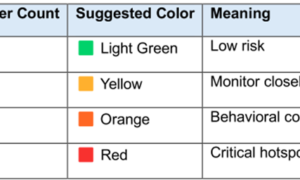The 1987 Mazda Miata holds a special place in the hearts of automotive enthusiasts. Its timeless design, nimble handling, and spirited performance have made it an icon on the road. However, for those seeking to take their Miata to the next level, there is an exciting upgrade that can unlock its true potential—the Catback Exhaust system. In this article, we will delve into the world of Catback Exhaust systems specifically designed for the 1987 Mazda Miata. Prepare to embark on a journey of enhanced power, invigorating sound, and an exhilarating driving experience. We will explore the benefits, features, and comparisons of various Catback Exhaust options, including the renowned Flashark Catback Exhaust system.
The Legacy of the 1987 Mazda Miata
The 1987 Mazda Miata holds a special place in automotive history as the vehicle that revived the affordable, lightweight, and fun-to-drive sports car segment. Designed with the spirit of classic British roadsters, the Miata captured the hearts of drivers worldwide. Its precise handling, balanced chassis, and open-top driving experience made it an instant favorite. Over the years, the 1987 Miata has become an enduring symbol of driving pleasure and has attracted a dedicated community of enthusiasts who appreciate its timeless design and spirited performance.
Here are some key features and aspects of the Mazda Miata:
- Design: The Miata features a classic roadster design with a sleek and compact body. Its design is often described as timeless and iconic, combining elements of vintage sports cars with modern touches. The car is known for its low-slung profile, short overhangs, and retractable soft-top roof.
- Performance: The Miata is designed to prioritize driving pleasure. It typically features a front-engine, rear-wheel-drive layout, which contributes to balanced handling and provides a more engaging driving experience. The car is known for its excellent handling, responsive steering, and nimble maneuverability. It offers a thrilling driving experience, especially when driven on winding roads or racetracks.
- Engine and Powertrain: The Miata is typically powered by a four-cylinder engine. Over the years, various engine options have been available, but the most recent generation, known as the ND model, introduced in 2015, offers a 2.0-liter Skyactiv-G engine. This engine delivers a blend of power and efficiency, providing an enjoyable driving experience. The power output may vary across different model years and trims.
- Transmission Options: The Miata is known for its available manual transmission, which enthusiasts often prefer for a more engaging driving experience. However, automatic transmission options have also been available, catering to a wider range of drivers.
- Generations and Updates: The Miata has undergone several generational updates since its inception. The NA generation (1989-1997) was followed by the NB (1998-2005), NC (2006-2015), and current ND (2015-present) generations. Each iteration has seen various improvements in terms of design, performance, technology, and safety features.
- Community and Enthusiast Culture: The Miata has a strong and dedicated community of enthusiasts around the world. Owners often enjoy participating in Miata clubs, events, and track days. The car is known for its customization options, with many aftermarket parts available to enhance its performance or aesthetics.
Understanding Catback Exhaust Systems
Catback Exhaust systems are aftermarket upgrades designed to replace the stock exhaust system from the catalytic converter back. They typically include components such as the resonator, mid-pipe, and rear muffler. The primary purpose of a Catback Exhaust system is to optimize exhaust flow, reduce backpressure, and improve engine performance. By allowing the engine to expel exhaust gases more efficiently, Catback Exhaust systems can unlock additional horsepower and torque, resulting in a noticeable improvement in acceleration and overall driving dynamics.
- Resonator: The resonator is a chamber within the exhaust system that helps control and modify the sound produced by the engine. It acts as a sound attenuator, reducing or eliminating unwanted exhaust noise and producing a more refined exhaust note.
- Mid-pipe: The mid-pipe connects the resonator to the rear muffler and plays a crucial role in exhaust flow. It is often designed with larger-diameter tubing and fewer restrictions than the stock mid-pipe, allowing for smoother and more efficient airflow.
- Rear Muffler: The rear muffler is the final component of the Catback Exhaust system. It is responsible for reducing noise levels and further tuning the exhaust note. Performance-oriented Catback Exhaust systems often feature rear mufflers designed to enhance sound while maintaining legal noise limits.
Enhancing Performance with Flashark Catback Exhaust
When it comes to upgrading the exhaust system of your 1987 Mazda Miata, Flashark Catback Exhaust stands out as a top-quality option. Crafted with precision engineering and using high-quality materials, Flashark Catback Exhaust offers a range of benefits for Miata enthusiasts. With Flashark Catback Exhaust, you can expect an increase in horsepower and torque, translating into improved acceleration and more spirited driving. The precise design and fitment of Flashark Catback Exhaust ensure a seamless installation process, allowing you to experience the performance gains without any hassle.
The auditory experience is an essential aspect of driving pleasure, and the right Catback Exhaust system can enhance the sound of your 1987 Mazda Miata. Flashark Catback Exhaust is designed to provide a deeper, more aggressive exhaust note that complements the Miata’s sporty character. The carefully tuned resonator, mid-pipe, and rear muffler of Flashark Catback Exhaust work together to create an exhilarating soundtrack that resonates with the enthusiast’s soul. Whether you’re cruising down the highway or revving through the gears, the enhanced exhaust note from Flashark Catback Exhaust will make your 1987 Miata stand out from the crowd.
Installing a Flashark Catback Exhaust System on your 1987 Mazda Miata is a straightforward process that can be accomplished with basic tools and mechanical knowledge: direct bolt-on, no modification needed. Flashark ensures precise fitment, ensuring that the Catback Exhaust system seamlessly integrates with the existing exhaust components. The detailed installation instructions provided by Flashark guide you through the process, making it accessible even to those with limited experience. Satisfyingly, if you have any problems during the installation process, you can talk directly to customer service and get their help. This is great for us buyers!
Comparing Catback Exhaust Options for the 1987 Mazda Miata
It’s also worth exploring other reputable brands and options to make an informed decision. Consider factors such as construction quality, performance gains, customer reviews, and pricing, and look for Catback Exhaust systems that are specifically designed for the 1987 Miata to ensure proper fitment and compatibility. While take your time to research and consult with automotive enthusiasts, online forums, and trusted sources to find the perfect Catback Exhaust system that aligns with your preferences and driving goals. While taking the time to research and consult with car enthusiasts, online forums, and trusted sources, it may be possible to find the perfect mid-rear exhaust system for your preferences and driving goals. But I have to say the Flashark Catback Exhaust is an excellent choice for enhancing the performance and sound of your 1987 Mazda Miata. If you haven’t used this product from Flashark, I think you might as well give it a try. Take our advice, I’m sure you’ll love it!
FAQs
Can I install a turbocharger or supercharger on my 1987 Miata?
Yes, it is possible to install a turbocharger or supercharger on the 1987 Miata to increase its horsepower and performance. However, it requires careful planning, proper installation, and additional supporting modifications to ensure reliability and optimal performance.
What are some common maintenance issues to look out for in the 1987 Miata?
Some common maintenance issues with the 1987 Miata include the replacement of aging rubber components such as belts, hoses, and bushings. Additionally, early models may experience rust in certain areas, so regular inspections and maintenance can help prevent or address any potential corrosion issues.
Is the Mazda Miata a good choice for track or autocross events?
Yes, the Mazda Miata is a popular choice for track and autocross events due to its nimble handling, balanced chassis, and responsive nature. Many enthusiasts enjoy the Miata’s agility and affordability for motorsport activities.
Can the Mazda Miata be driven in winter conditions?
While the Mazda Miata is rear-wheel drive, with proper winter tires and cautious driving, it can be driven in winter conditions. However, it’s important to note that it may not perform as well in icy or snowy conditions compared to all-wheel-drive vehicles.
Where can I find Mazda Miatas for sale?
You can find Mazda Miatas for sale through various channels. Start by checking local dealerships that specialize in Mazda or used cars. Additionally, online platforms such as Autotrader, Cars.com, Craigslist, and eBay Motors often have listings for Mazda Miatas available in your area.
What are the common features and specifications to consider when purchasing a Mazda Miata?
When purchasing a Mazda Miata, it’s important to consider factors such as the model year, engine size, transmission type (manual or automatic), trim level, mileage, condition, and any additional features or options. Other features to look out for include convertible tops, infotainment systems, safety features, and performance enhancements.





























